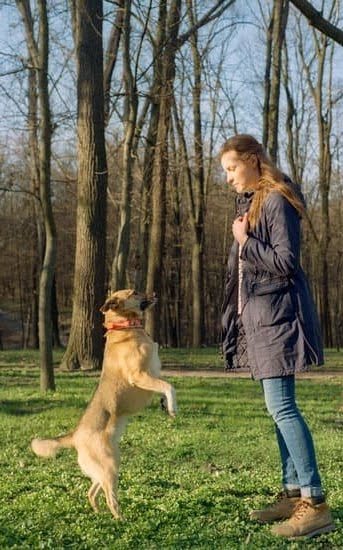Training a bird dog to point is an essential skill for any hunting enthusiast. Pointing behavior is a natural instinct in bird dogs, but it can be honed and developed through proper training techniques. Understanding the innate instincts of pointing in bird dogs is crucial in successfully training them to become reliable hunting companions.
When it comes to selecting the right breed for pointing purposes, some breeds are more predisposed to pointing behaviors than others. Establishing a strong bond with your bird dog is also key to effective training. Building trust and a positive relationship with your dog will make the training process smoother and more successful.
In this article, we will delve into basic and advanced training techniques for teaching your bird dog to point effectively. From utilizing bird wings or scents to encourage pointing behavior to avoiding common mistakes during training, we will provide you with valuable tips and strategies for consistent and successful pointing behavior. By reinforcing desired behaviors through positive reinforcement, you can celebrate progress and enjoy hunting alongside your well-trained bird dog.
Selecting the Right Bird Dog Breed for Pointing
When it comes to training a bird dog to point, one crucial factor to consider is selecting the right breed for pointing. Not all dog breeds are naturally inclined towards pointing behavior, so choosing the appropriate breed can significantly impact your training success. Some common bird dog breeds known for their pointing abilities include the English Pointer, German Shorthaired Pointer, and Brittany Spaniel.
Each breed has its unique characteristics and strengths when it comes to pointing, so it’s essential to research and understand these breed traits before making a decision. For example, English Pointers are renowned for their intense focus and steadfast pointing stance, while German Shorthaired Pointers are versatile hunters with excellent pointing and retrieving skills. On the other hand, Brittany Spaniels are known for their high energy levels and natural instinct for locating birds.
Understanding the inherent qualities of different bird dog breeds can help you choose a dog that aligns with your hunting preferences and training goals. Whether you prefer a dog with a strong prey drive for upland game birds or one that excels in versatility across various hunting terrains, selecting the right breed is the first step towards effectively training a bird dog to point.
This foundational decision sets the stage for successful training outcomes as you embark on teaching your bird dog how to point efficiently.
Establishing a Strong Bond With Your Bird Dog
Spending Quality Time Together
One of the first steps in building a strong bond with your bird dog is to spend quality time together. Take your dog on regular walks, play games, cuddle, and engage in activities that allow you to connect on a deeper level. Regular interaction will help you understand your dog’s personality, preferences, and needs, which are essential factors when training them to point effectively.
Positive Reinforcement and Rewarding Good Behavior
Another crucial aspect of establishing a strong bond with your bird dog is through positive reinforcement and rewarding good behavior. When your dog exhibits behaviors that are desirable during training sessions, such as pointing or following commands correctly, be sure to praise them enthusiastically and offer treats or toys as rewards. This positive reinforcement will strengthen the bond between you and your bird dog while motivating them to continue displaying the desired behaviors.
Communication and Trust
Effective communication is key to building trust with your bird dog. Use consistent verbal cues, body language, and gestures to convey messages during training sessions. Establishing clear communication lines will help your bird dog understand what is expected of them and what behaviors lead to rewards. Trust is built over time through consistent training efforts and positive interactions, so be patient and persistent in nurturing this important aspect of your relationship with your bird dog.
Basic Training Techniques for Pointing
Training a bird dog to point is an essential skill that every bird dog owner must master in order to have a successful hunting companion. Basic training techniques play a crucial role in laying the foundation for this behavior and ensuring that your bird dog understands what is expected of them in the field. Here are some key strategies on how to train a bird dog to point effectively:
- Start with basic obedience training: Before diving into specific pointing behaviors, it is important to establish a strong foundation of obedience with your bird dog. Commands such as sit, stay, and come are essential for effective communication between you and your dog during training sessions.
- Introduce the “whoa” command: The “whoa” command is commonly used in bird dog training to teach them to stop and remain still when they spot game. Start by using a check cord or leash to guide your dog into a standing position, while giving the verbal command “whoa.” Gradually increase the distance between you and your dog as they become more comfortable with holding the position.
- Practice with planted birds or dummies: To simulate real hunting scenarios, consider using planted birds or bird dummies during training sessions. Encourage your bird dog to search for and locate these targets, rewarding them when they successfully point at the object. This will help reinforce their natural instinct to point.
By incorporating these basic training techniques into your routine, you can effectively teach your bird dog how to point and set them up for success in the field. Remember to be patient and consistent in your training approach, as building a strong foundation is key to achieving reliable pointing behavior from your feathered friend.
Advanced Training Methods for Improved Pointing
When it comes to training a bird dog to point effectively, advanced methods can help take your dog’s skills to the next level. These techniques are crucial for refining and enhancing your bird dog’s natural pointing instincts. Here are some advanced training methods that can help improve your bird dog’s pointing abilities:
1. Back Command: Teach your bird dog the “back” command to develop better control and precision in pointing. This command helps guide your dog to maintain its position while pointing at a bird. Use a combination of hand signals and verbal cues to communicate this command effectively.
2. Steadiness Training: Train your bird dog to remain steady when birds are flushed, shot, or fall. This is important for hunting scenarios where you want your dog to stay focused on the task at hand without breaking point prematurely. Practice steadiness training in various environments to reinforce this behavior.
3. Honoring Other Dogs: Incorporate honoring exercises into your training routine to teach your bird dog how to respect another dog’s point. This skill is essential for hunting with multiple dogs, as it ensures each dog takes turns pointing and remains disciplined in the field.
By incorporating these advanced training methods into your sessions, you can enhance your bird dog’s pointing abilities significantly. Consistency, patience, and positive reinforcement are key elements in successfully implementing these techniques to achieve optimal results in training a bird dog to point accurately and reliably.
Remember that every bird dog is unique, so tailor your training approach based on your individual dog’s learning style and abilities. By investing time and effort into advanced training methods, you can refine your bird dog’s skills and enjoy a successful hunting experience together.
Utilizing Bird Wings or Scent to Encourage Pointing
Introduction to Bird Wings and Scent Training
One effective method for training a bird dog to point is by using bird wings or scents. These tools can help simulate real hunting situations and encourage the natural pointing instincts of your bird dog. By incorporating these elements into your training routine, you can better prepare your dog for the field and improve their pointing skills.
Introducing Bird Wings
Bird wings are a popular tool used in bird dog training to simulate the presence of birds in the field. By tying a bird wing to a fishing line or pole, you can create movement that mimics a flying bird.
This motion can trigger your bird dog’s instinct to point, allowing you to reinforce this behavior during training sessions. Gradually increasing the distance and duration of exposure to bird wings can help improve your dog’s pointing abilities over time.
Using Scent Training
Scent training is another valuable technique for encouraging pointing behavior in bird dogs. By introducing your dog to scents from birds or game, you can teach them to associate specific smells with the presence of prey. Start by introducing these scents in controlled environments and rewarding your dog when they exhibit pointing behavior in response.
As your dog becomes more familiar with the scents, gradually transition to outdoor settings where they can practice pointing in actual hunting scenarios. Over time, consistent scent training can help enhance your bird dog’s ability to point effectively in the field.
Common Mistakes to Avoid During Bird Dog Training
When it comes to training a bird dog to point, it is essential to be aware of common mistakes that can hinder the progress of your training efforts. One of the most common mistakes to avoid is inconsistency in training sessions. Consistency is key when teaching a bird dog any behavior, including pointing. It is important to set a regular training schedule and stick to it in order to reinforce the desired behavior effectively.
Another mistake to avoid is using punishment-based training methods. While it may be tempting to resort to punishment when your bird dog does not point as desired, this can actually have a negative impact on their learning and can damage the bond between you and your dog. Instead, focus on positive reinforcement techniques that reward your bird dog for displaying the pointing behavior you are looking for.
Additionally, rushing through the training process is a mistake that many bird dog owners make. Training a bird dog to point takes time, patience, and consistency. It is important not to rush through the process in an attempt to achieve quick results.
Take the time to go at your bird dog’s pace, reinforce good behaviors, and celebrate small victories along the way. Remember that every dog is unique and will progress at their own pace when learning how to point. By avoiding these common mistakes and focusing on positive reinforcement techniques, you can help your bird dog reach their full potential as a skilled pointer in the field.
Tips for Consistent and Successful Pointing Behavior
Bird dogs are renowned for their ability to point out game birds while hunting. To ensure consistent and successful pointing behavior in your bird dog, it is essential to follow specific tips and techniques that will help reinforce this natural instinct. One key aspect of training a bird dog to point is understanding the breed’s instincts and behaviors, as well as utilizing the right methods for training.
Patience and consistency are crucial when training a bird dog to point. It is important to establish clear communication with your dog through consistent commands and positive reinforcement. By using consistent gestures, words, and rewards, you can effectively teach your bird dog to associate pointing behavior with a positive outcome. This approach helps create a strong bond between you and your dog, fostering trust and cooperation during the training process.
In addition to consistent training methods, providing regular exercise and mental stimulation for your bird dog is vital for maintaining their pointing skills. Engaging in activities that mimic hunting scenarios, such as using decoys or scent trails, can help reinforce their natural instincts. By incorporating these elements into your training routine, you can enhance your bird dog’s pointing abilities and ensure they are ready for successful hunting expeditions.
| Tips for Consistent Pointing Behavior | Key Techniques |
|---|---|
| Establish clear communication | Consistent commands and positive reinforcement |
| Provide regular exercise | Mental stimulation through hunting simulations |
Reinforcing Pointing Behavior Through Positive Reinforcement
Positive reinforcement is a crucial aspect of training a bird dog to point effectively. By utilizing rewards and praise when your bird dog exhibits the desired behavior, you can strengthen the pointing response. One effective method is to use treats as a reward when your dog successfully points at a target. This creates a positive association with pointing and encourages your bird dog to continue this behavior in the future.
Consistency is key when it comes to positive reinforcement in bird dog training. Make sure to reward your dog every time they successfully point, even if it’s during practice sessions. This will help reinforce the behavior and make it more likely to occur again in the future. Additionally, using verbal praise alongside treats can further enhance the positive reinforcement process and strengthen the bond between you and your bird dog.
It’s important to remember that each bird dog is unique, so it may take some trial and error to determine what type of reward works best for your specific dog. Some dogs may be more motivated by food treats, while others may respond better to play or affection. By understanding what motivates your bird dog and adjusting your reinforcement strategies accordingly, you can effectively reinforce their pointing behavior and improve their overall performance in the field.
| Positive Reinforcement Method | Effectiveness |
|---|---|
| Using treats as rewards | Effective in strengthening pointing behavior |
| Consistent rewards for pointing | Reinforces behavior for future instances |
| Verbal praise alongside treats | Enhances positive association with pointing |
Conclusion
As any experienced bird dog trainer will tell you, training a bird dog to point is both an art and a science. It requires patience, dedication, and a deep understanding of your canine companion’s instincts and behaviors. By following the right techniques and methods, you can develop a strong bond with your bird dog and transform them into a skilled hunter that will make you proud in the field.
Selecting the right bird dog breed for pointing is crucial, as different breeds have varying levels of instinctual pointing behavior. Once you have found the perfect match, establishing a strong bond with your bird dog through consistent training and positive reinforcement is key to success. Basic training techniques are essential for laying the foundation, while advanced methods can help improve your bird dog’s pointing precision over time.
Utilizing props such as bird wings or scent can also play a significant role in encouraging pointing behavior in your bird dog. However, it is important to avoid common mistakes during training that could hinder progress. By staying consistent, patient, and always rewarding good behavior, you can reinforce pointing behavior effectively in your trained bird dog.
Ultimately, celebrating the progress you’ve made together and enjoying hunting experiences with your loyal companion is what makes all the hard work worthwhile. With dedication and love, your trained bird dog will be a valuable partner for many successful hunts to come.
Frequently Asked Questions
How Do I Get My Bird Dog to Hold Point?
Training a bird dog to hold point requires patience, consistency, and positive reinforcement. Start by using a wing or a training aid to trigger the pointing behavior, rewarding the dog when they hold the point successfully. Gradually increase distractions and distance as they improve.
How Do I Get My German Shorthaired Pointer to Point?
German Shorthaired Pointers are natural pointers, but training them to point consistently involves building on their instinctual behavior. Utilize bird wings or scents to encourage pointing, reward them for holding the point, and gradually introduce different environments to reinforce the behavior across various settings.
How Do Bird Dogs Point?
Bird dogs point as part of their hunting instincts that have been selectively bred over generations. When they detect a scent from a bird, their natural inclination is to freeze and lock onto the location of the prey. This behavior helps hunters locate game more efficiently in the field.

Welcome to the blog! I am a professional dog trainer and have been working with dogs for many years. In this blog, I will be discussing various topics related to dog training, including tips, tricks, and advice. I hope you find this information helpful and informative. Thanks for reading!





